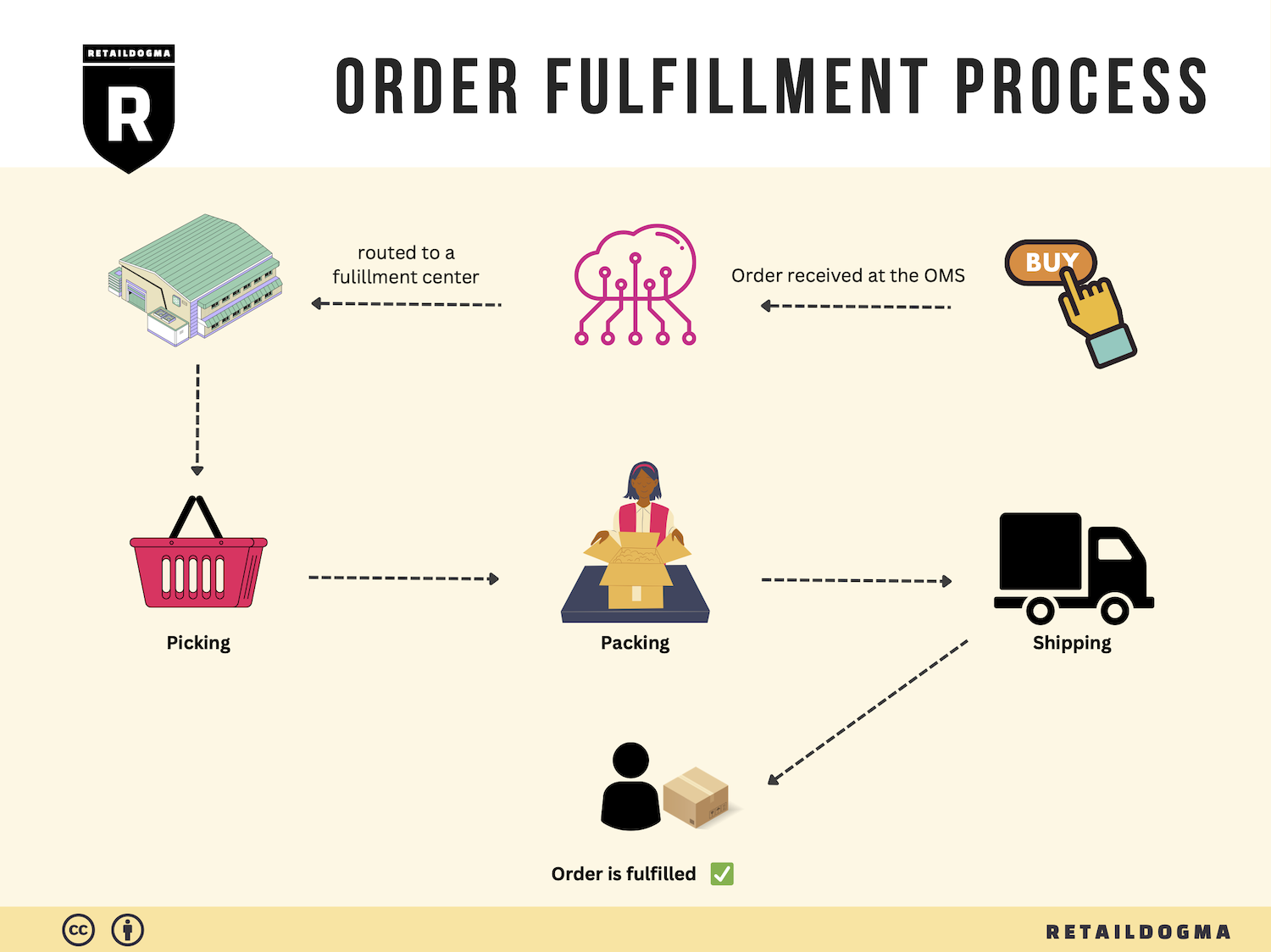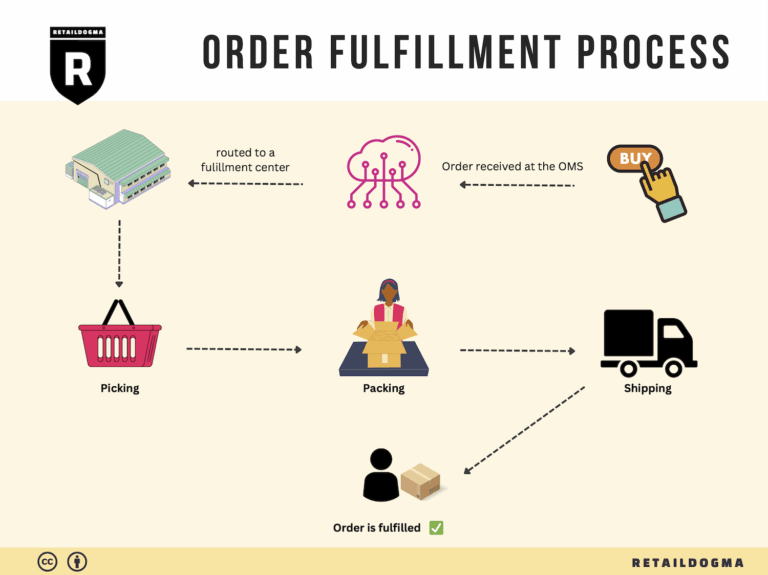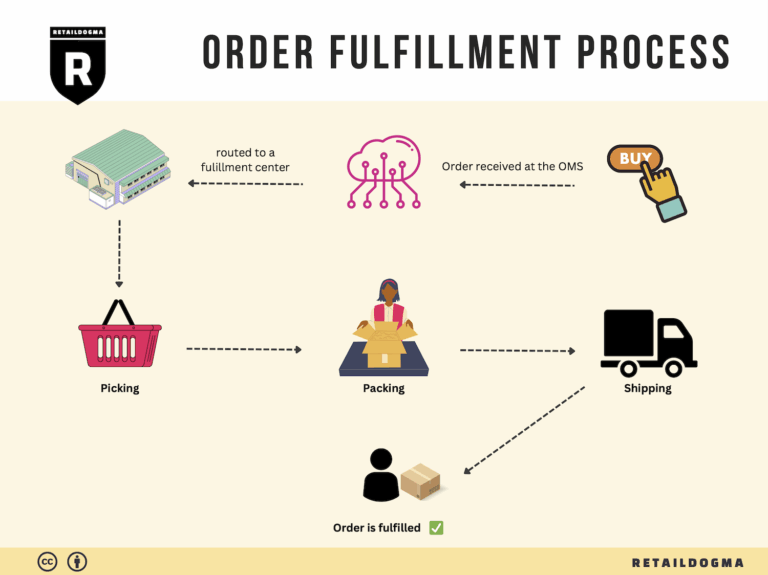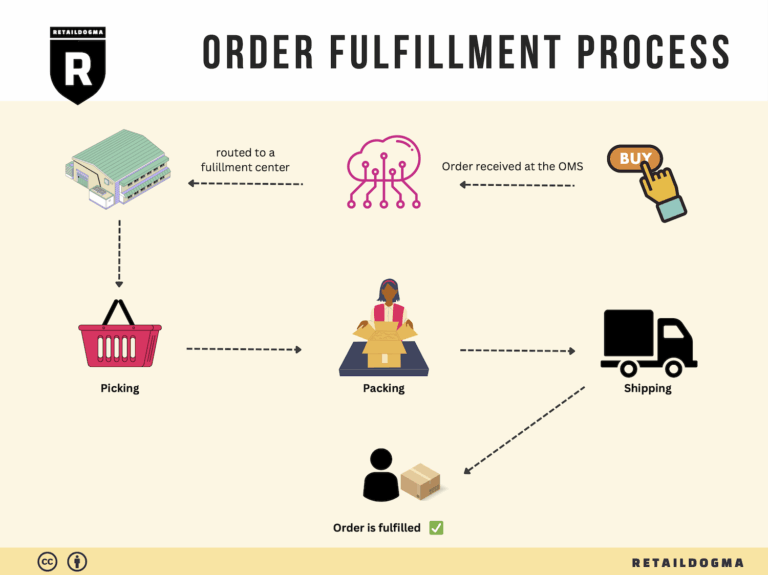What Is A Fulfillment Center? A Complete Guide (2025)
What is E-commerce Fulfillment? An Introduction for Growing Businesses
As your e-commerce business begins to grow, the excitement of increased sales can quickly be overshadowed by the daunting logistics of packing and shipping orders. Many entrepreneurs find themselves overwhelmed by the sheer volume of orders, struggling to manage inventory, and maintaining customer satisfaction while juggling the complexities of fulfillment. This is where understanding e-commerce fulfillment becomes crucial.
Understanding E-commerce Fulfillment
At its core, e-commerce fulfillment is the process of getting products from your warehouse or storage facility to your customers’ doorsteps. This process encompasses everything from inventory management and order processing to picking, packing, and shipping. For growing businesses, efficient fulfillment is vital not only for maintaining customer satisfaction but also for ensuring sustainable growth.
In this guide, we will explore various fulfillment models, including Third-Party Logistics (3PL) and Fulfillment by Amazon (FBA), each offering unique benefits and challenges. We will break down the core services offered by fulfillment companies, such as warehousing, inventory management, order processing, and shipping solutions, to help you understand what to expect from a potential partner.
Choosing the Right Fulfillment Partner
Selecting the right fulfillment partner is a critical decision for any e-commerce business. With numerous companies offering a range of services and pricing structures, it can be challenging to navigate your options. This guide will provide you with practical insights on how to evaluate potential partners based on their technological capabilities, service offerings, and ability to scale alongside your business.
Pricing Considerations
Understanding pricing models is another key aspect of e-commerce fulfillment. Costs can vary widely based on factors such as storage fees, shipping rates, and additional services like packaging and returns management. We will outline the typical pricing structures you can expect and how to evaluate them to find a solution that fits your budget while meeting your operational needs.
Empowering Smart Decisions
The ultimate goal of this guide is to empower e-commerce business owners, operations managers, and entrepreneurs to make informed decisions about their logistics. By demystifying the complexities of e-commerce fulfillment, we aim to provide you with the knowledge and confidence to choose a fulfillment strategy that aligns with your business objectives, ensuring you can focus on what you do best—growing your brand and serving your customers.
What You’ll Learn In This Guide
- What is E-commerce Fulfillment? An Introduction for Growing Businesses
- The Order Fulfillment Process: From ‘Buy’ Button to Customer’s Door
- Comparing Fulfillment Models: In-House vs. 3PL vs. Dropshipping
- A Deep Dive into Amazon FBA: Pros, Cons, and Who It’s For
- Core Services Offered by Fulfillment Centers
- How to Choose a Fulfillment Partner: A 6-Point Checklist
- Understanding Fulfillment Pricing: A Breakdown of Common Fees
- Frequently Asked Questions (FAQs) about Fulfillment
- Conclusion: Is Outsourcing Fulfillment the Right Move for Your Business?
- Important Disclaimer
The Order Fulfillment Process: From ‘Buy’ Button to Customer’s Door
1. Receiving Inventory
The order fulfillment process begins with receiving inventory from suppliers or manufacturers. This step is crucial as it establishes the foundation for the entire fulfillment operation. Upon arrival, each shipment is checked against purchase orders to ensure accuracy in quantity and quality. Key terms associated with this step include SKU (Stock Keeping Unit), which helps in tracking individual items in the inventory system.
Why is this step important? Accurate receiving minimizes discrepancies that can lead to stockouts or overstock situations. It also enables businesses to maintain a clear understanding of their inventory levels, which is critical for effective order management and forecasting. By implementing systematic receiving processes, companies can streamline their operations and reduce errors, ensuring that the right products are available for order fulfillment.
2. Warehouse Storage
Once inventory is received and verified, the next step is warehouse storage. Products are organized in a way that optimizes space and accessibility, using methods like shelving, pallet racking, or bin systems. This organization is often managed through a Warehouse Management System (WMS), which tracks the location of each SKU.
Efficient storage is vital as it directly impacts the speed and accuracy of order fulfillment. By strategically placing high-demand items closer to the packing stations, businesses can reduce the time it takes to pick orders. Additionally, effective storage practices help prevent damage and loss, ensuring that products remain in sellable condition. This step lays the groundwork for smooth operations in subsequent stages of the fulfillment process.
3. Order Picking
With inventory stored and organized, the next step is order picking. When a customer places an order, the fulfillment center generates a pick list—a document that outlines the items and their locations in the warehouse. Warehouse staff then retrieve the products listed on the pick list, often utilizing technologies like barcode scanners to ensure accuracy.
Order picking is a critical step because it directly influences order accuracy and fulfillment speed. Errors in this stage can lead to customer dissatisfaction and increased return rates. Therefore, businesses should aim to implement efficient picking strategies, such as batch picking (picking multiple orders at once) or wave picking (picking in waves based on shipping schedules). By optimizing this step, companies can enhance their operational efficiency and improve customer experience.
4. Order Packing
After items are picked, the next step is order packing. This involves carefully packaging the products for shipment, ensuring they are protected during transit. Key considerations during this stage include selecting the appropriate packaging materials, such as boxes, bubble wrap, or packing peanuts, to prevent damage.
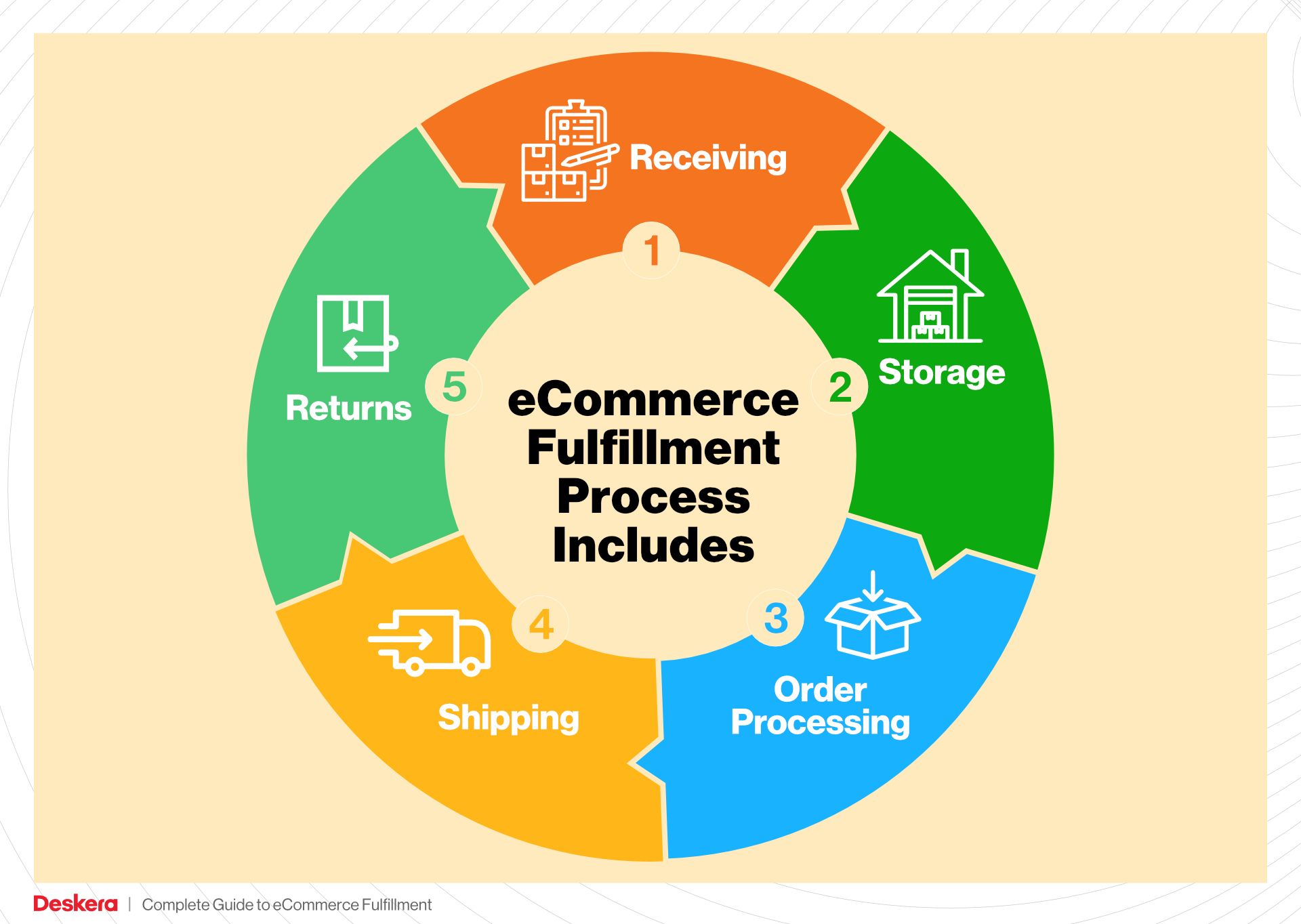
Packing is essential for several reasons. First, it protects the product, ensuring it arrives in good condition. Second, it influences shipping costs; using the right size and weight can minimize expenses. Third, it offers an opportunity for branding—custom packaging can enhance the unboxing experience and reinforce brand identity. Thus, investing in efficient packing processes can lead to greater customer satisfaction and loyalty.
5. Shipping & Delivery
The final step in the order fulfillment process is shipping and delivery. Once an order is packed, it is handed over to a carrier for transport. Businesses must choose shipping options that balance cost and speed, often utilizing Shipping Management Systems (SMS) to compare rates and select the best carrier for each order.
This stage is crucial as it determines the overall delivery experience for the customer. Timely and accurate shipping can significantly impact customer satisfaction and retention. Additionally, providing tracking information allows customers to monitor their order’s progress, enhancing transparency and trust. As businesses scale, optimizing shipping and delivery processes becomes increasingly important to maintain competitiveness in the market.
In conclusion, the order fulfillment process is a complex but essential aspect of e-commerce operations. By understanding and optimizing each step—from receiving inventory to shipping and delivery—businesses can enhance efficiency, reduce costs, and improve customer satisfaction, positioning themselves for growth and success in the competitive online marketplace.
Comparing Fulfillment Models: In-House vs. 3PL vs. Dropshipping
Fulfillment Models Comparison
| Model | Who Handles Inventory | Best For (Business Stage) | Key Advantage | Key Disadvantage |
|---|---|---|---|---|
| In-House Fulfillment | Business Owner/Staff | Established businesses | Full control over operations and quality | High overhead costs and complexity |
| Third-Party Logistics (3PL) | 3PL Provider | Growing businesses | Scalable solutions with expertise in logistics | Less control over inventory and processes |
| Dropshipping | Supplier/Manufacturer | Startups and small businesses | Low upfront costs and minimal risk | Lower profit margins and potential delays |
In-House Fulfillment
In-house fulfillment refers to the process where a business manages its own warehousing, inventory management, and order fulfillment. This model is typically favored by established businesses that have the resources to invest in infrastructure, personnel, and technology. The key advantage of in-house fulfillment is the level of control it provides; businesses can oversee every aspect of their operations, ensuring quality and consistency in the fulfillment process. Additionally, having direct access to inventory allows for better handling of customer service issues and order accuracy. However, this model also comes with significant drawbacks. The costs associated with maintaining a warehouse, hiring staff, and managing logistics can be substantial. Moreover, scaling operations can become complex and burdensome, particularly during peak seasons or unexpected demand surges.
Third-Party Logistics (3PL)
Third-party logistics (3PL) providers offer outsourced logistics services, including warehousing, order fulfillment, and shipping. This model is particularly advantageous for growing businesses that require a flexible and scalable solution without the heavy investment of in-house fulfillment. By partnering with a 3PL, businesses can leverage the provider’s expertise and infrastructure, allowing them to focus on core operations such as marketing and product development. 3PLs typically have established relationships with shipping carriers, which can lead to reduced shipping costs and faster delivery times. However, the main disadvantage of using a 3PL is the potential loss of control over inventory and fulfillment processes. Businesses must rely on the 3PL’s capabilities and service levels, which can vary significantly. Additionally, integrating a 3PL’s systems with your own can sometimes present challenges, requiring careful planning and execution.
Dropshipping
Dropshipping is a fulfillment model where a business sells products without holding any inventory. Instead, when a customer places an order, the business purchases the item from a third-party supplier, who then ships it directly to the customer. This model is ideal for startups and small businesses, as it requires minimal upfront investment and reduces the financial risk associated with unsold inventory. The key advantage of dropshipping is the flexibility it provides; businesses can offer a wide range of products without the need for significant storage space or inventory management. However, dropshipping comes with its own set of challenges. Profit margins are often lower compared to other fulfillment models, as suppliers typically charge wholesale prices that limit retail markups. Additionally, businesses may face delays and inconsistencies in shipping and product quality, which can negatively impact customer satisfaction. As such, effective communication with suppliers and careful selection of reliable partners are critical to success in the dropshipping model.
Conclusion
Choosing the right fulfillment model is essential for e-commerce businesses aiming to scale effectively. Each model—In-House Fulfillment, Third-Party Logistics, and Dropshipping—offers unique advantages and challenges. Businesses should carefully assess their operational needs, financial resources, and growth ambitions to determine which model aligns best with their overall strategy. Whether opting for the control of in-house fulfillment, the scalability of 3PL, or the low-risk approach of dropshipping, understanding the nuances of each model will empower e-commerce leaders to make informed decisions that drive success.
A Deep Dive into Amazon FBA: Pros, Cons, and Who It’s For
What is Fulfillment by Amazon (FBA)?
Fulfillment by Amazon (FBA) is a service provided by Amazon that allows e-commerce sellers to store their products in Amazon’s fulfillment centers. Amazon takes care of storage, packaging, and shipping to customers, as well as handling returns and customer service. By utilizing FBA, sellers can leverage Amazon’s vast logistics network and customer trust to scale their businesses more effectively.
How FBA Works
The FBA process can be broken down into several key steps:
-
Account Setup: Sellers begin by creating an Amazon seller account and signing up for FBA.
-
Inventory Preparation: Sellers prepare their products according to Amazon’s guidelines, which include packaging and labeling specifications.
-
Shipping to Amazon: Once the products are ready, sellers ship their inventory to Amazon’s fulfillment centers. Amazon provides shipping guidelines to optimize costs and efficiency.
-
Storage: Products are stored in Amazon’s warehouses until they are sold. Amazon manages the inventory and updates stock levels in real time.
-
Order Processing: When a customer places an order, Amazon picks, packs, and ships the product on behalf of the seller.
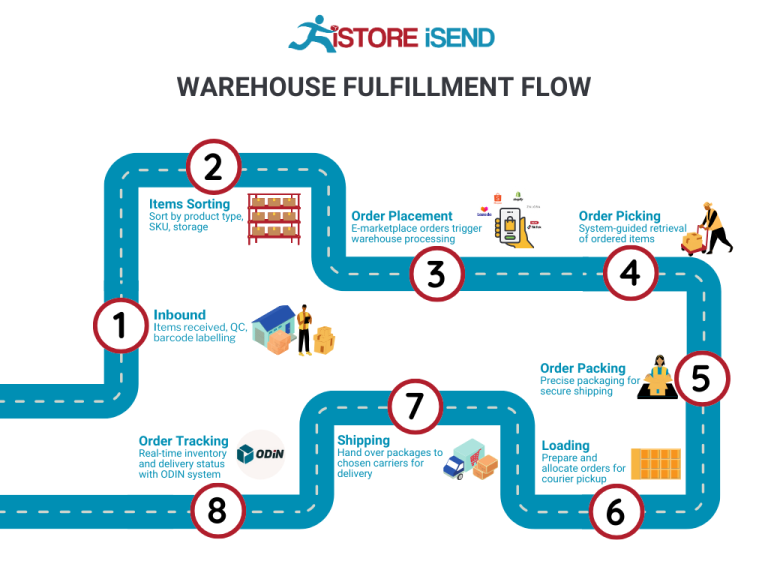
-
Customer Service and Returns: Amazon handles customer service inquiries related to the order and manages returns, providing a seamless experience for buyers.
-
Fees: Sellers are charged various fees based on storage, fulfillment, and additional services, which can impact profit margins.
Pros of Using FBA
-
Prime Eligibility: Products fulfilled by Amazon are eligible for Amazon Prime, which can significantly increase sales. Prime members often prefer products that offer faster shipping and free delivery, making FBA an attractive option.
-
Customer Trust: Leveraging Amazon’s brand recognition and customer service can enhance buyer confidence. Consumers are more likely to purchase from sellers using FBA due to Amazon’s reputation for reliable service.
-
Multi-Channel Fulfillment: FBA is not limited to Amazon sales. Sellers can use FBA to fulfill orders from other sales channels, such as their own websites or other e-commerce platforms, allowing for centralized inventory management.
-
Scalability: FBA allows businesses to scale without worrying about logistics. Sellers can focus on growing their brands while Amazon manages the complexities of storage and shipping.
-
Time Savings: Outsourcing fulfillment to Amazon frees up time for sellers to concentrate on product development, marketing, and customer engagement rather than logistics.
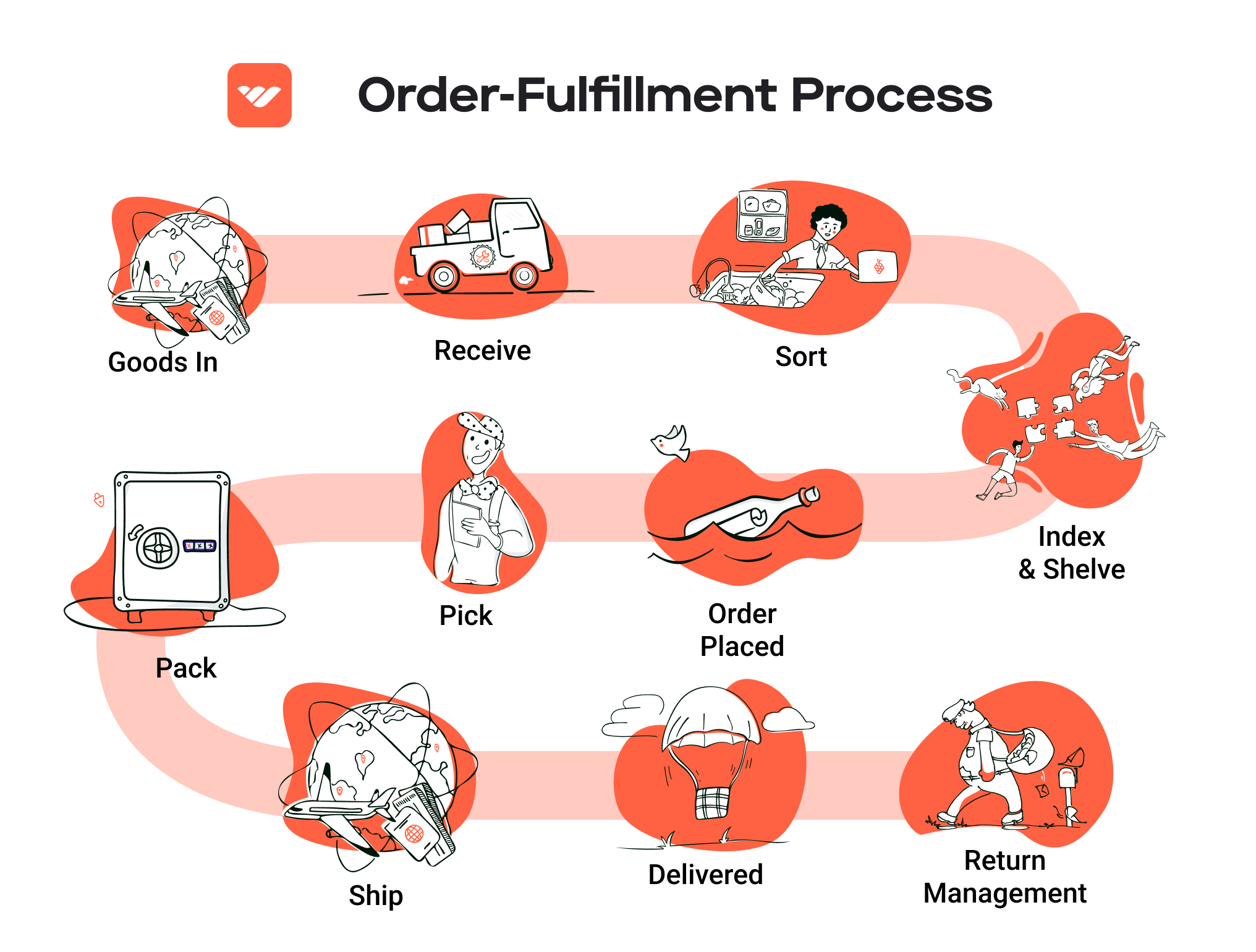
-
International Reach: With FBA, sellers can easily expand their market reach internationally, as Amazon has fulfillment centers around the globe.
Cons of Using FBA
-
High Fees: FBA fees can be substantial, including storage fees and fulfillment fees. These costs can eat into profit margins, especially for low-cost items or slow-moving inventory.
-
Strict Inventory Rules: Amazon has stringent inventory management rules, including restrictions on certain product types, which can be challenging for sellers. Non-compliance can lead to additional fees or account suspension.
-
Commingling Risks: FBA allows for commingling inventory, meaning that products from different sellers may be mixed together. This can lead to issues if a customer receives a product from another seller, potentially damaging the original seller’s reputation.
-
Limited Control: Once inventory is sent to Amazon, sellers relinquish control over the fulfillment process. This lack of control can be problematic if issues arise, such as inventory damage or shipping errors.
-
Complex Returns Process: While Amazon handles returns, the process can sometimes be complicated for sellers, especially if they wish to track returns or manage customer feedback directly.
-
Potential for Account Suspension: Sellers face the risk of account suspension for various reasons, including performance metrics that fall below Amazon’s standards, which can halt sales unexpectedly.
Who is FBA Best For?
Fulfillment by Amazon is particularly well-suited for:
-
Small to Medium-Sized E-commerce Businesses: Businesses that want to scale quickly without investing heavily in logistics infrastructure can benefit from FBA’s capabilities.
-
Sellers with High Sales Volume: Those who sell products that turn over quickly can take advantage of FBA’s efficient fulfillment and shipping process.
-
Brands Seeking Brand Recognition: New or lesser-known brands looking to build credibility can leverage Amazon’s trusted platform to increase visibility and sales.
-
Sellers with Limited Logistics Experience: Businesses that lack expertise in inventory management and shipping can rely on Amazon’s logistics capabilities, allowing them to focus on their core operations.
-
International Sellers: E-commerce businesses looking to enter new markets can use FBA to facilitate shipping and fulfillment across borders without the need for a local presence.
In conclusion, FBA offers a compelling solution for many e-commerce sellers, allowing them to streamline their operations and reach a broader customer base. However, it’s essential to weigh the pros and cons carefully and consider how FBA aligns with your business goals and operational capabilities before diving in.
Core Services Offered by Fulfillment Centers
Inventory Management & Warehousing
Inventory management and warehousing are foundational services offered by fulfillment centers, designed to streamline the storage and organization of products for e-commerce businesses. This involves not only storing goods in a secure environment but also managing stock levels, tracking inventory movement, and ensuring that products are readily available for order fulfillment.
Effective inventory management allows e-commerce businesses to maintain optimal stock levels, reducing the risks of overstocking or stockouts. This is crucial for maintaining cash flow and ensuring customer satisfaction. A well-organized warehouse system can provide real-time data on inventory levels, enabling businesses to make informed decisions regarding purchasing, production, and sales strategies.
Benefits of robust inventory management include:
- Reduced Costs: By optimizing stock levels, businesses can minimize holding costs associated with excess inventory.
- Enhanced Accuracy: Automated inventory tracking systems reduce human error, ensuring that data is accurate and up-to-date.
- Improved Customer Satisfaction: With reliable inventory management, businesses can fulfill orders quickly and accurately, leading to higher customer retention rates.
Pick and Pack Services
Pick and pack services are essential for e-commerce fulfillment, as they involve the process of selecting items from inventory (picking) and preparing them for shipment (packing). This service is crucial for businesses that deal with a variety of products and require efficient order processing.
Fulfillment centers utilize advanced technology and skilled staff to ensure that orders are picked accurately and packed securely. This process often includes labeling, packing materials, and shipping documentation, which are essential for timely delivery and customer satisfaction.
The benefits of effective pick and pack services include:
- Speedy Fulfillment: Quick and efficient order processing helps businesses meet customer expectations for delivery times.
- Customization: Many fulfillment centers offer customizable packing options, allowing businesses to enhance their branding and customer experience.
- Scalability: As businesses grow, fulfillment centers can easily scale their pick and pack operations to accommodate increased order volumes without sacrificing quality.
Kitting and Assembly
Kitting and assembly services involve the grouping of individual items into ready-to-sell sets or kits. This can include assembling products that require multiple components or packaging items together for promotional purposes. This service is particularly beneficial for businesses that sell products that are frequently purchased together or require assembly before they can be sold.
By outsourcing kitting and assembly to fulfillment centers, e-commerce businesses can focus on their core operations while ensuring that their products are ready for sale upon reaching the customer. Fulfillment centers typically have the necessary tools, space, and labor to efficiently assemble products, which can lead to significant time and cost savings.
The benefits of kitting and assembly services include:
- Increased Efficiency: Fulfillment centers can streamline the kitting process, allowing businesses to quickly offer bundled products to customers.
- Enhanced Customer Experience: Well-assembled kits can lead to a more appealing product presentation, improving customer satisfaction and potentially increasing sales.
- Inventory Management: Kitting allows businesses to manage inventory more effectively by reducing the number of individual SKUs they need to track.
Returns Management (Reverse Logistics)
Returns management, or reverse logistics, is a critical service provided by fulfillment centers that focuses on handling returned products. An efficient returns process is essential for maintaining customer loyalty and satisfaction, as it can significantly impact a customer’s perception of a brand.
Fulfillment centers streamline the returns process by managing the logistics involved in receiving, inspecting, and restocking returned items. They often have established procedures in place to handle different types of returns, whether due to customer dissatisfaction, defects, or other reasons.
The benefits of effective returns management include:
- Improved Customer Trust: A hassle-free returns process enhances customer confidence in a brand, leading to higher repeat purchase rates.
- Cost Savings: Efficient returns management can minimize the costs associated with processing returns and managing unsold inventory.
- Data Insights: By analyzing return data, businesses can identify trends and issues with products, enabling them to make informed decisions about inventory, product quality, and customer service.
In conclusion, partnering with a proficient fulfillment center can significantly enhance the efficiency and effectiveness of e-commerce operations. By leveraging services such as inventory management, pick and pack, kitting and assembly, and returns management, businesses can focus on growth while ensuring exceptional service delivery to their customers.
How to Choose a Fulfillment Partner: A 6-Point Checklist
Location & Warehouse Network
Importance:
The geographical location of your fulfillment partner’s warehouses is crucial for optimizing shipping times and costs. A strategically placed warehouse network allows you to reach customers faster and reduces shipping expenses, particularly for e-commerce businesses targeting specific regions or cross-border markets.
Questions to Ask:
– Where are your warehouses located, and how do they align with my customer base?
– Do you have facilities in key markets, such as urban centers or border regions?
– How do you manage inventory across multiple locations?
Technology & Integrations
Importance:
In today’s digital age, the technology used by your fulfillment partner can significantly impact operational efficiency. A robust technological framework allows for real-time inventory tracking, order management, and seamless integration with e-commerce platforms, ensuring a smooth workflow.
Questions to Ask:
– What order management system do you use, and is it compatible with my e-commerce platform (e.g., Shopify, WooCommerce)?
– How do you handle data synchronization between your systems and mine?
– Can you provide real-time tracking for shipments, and how is that information shared with customers?
Specializations (e.g., cold storage, oversized items)
Importance:
Every business has unique requirements based on the types of products they sell. If your inventory includes specialized items, such as perishable goods requiring cold storage or oversized products that need special handling, it’s essential to choose a partner with the right capabilities.
Questions to Ask:
– What specializations do you offer that align with my product categories (e.g., cold storage, hazardous materials)?
– How do you ensure compliance with regulations for specialized goods?
– Can you provide examples of how you’ve successfully handled similar products for other clients?
Scalability & Capacity
Importance:
As your business grows, your fulfillment needs will evolve. A capable fulfillment partner should be able to scale operations to accommodate increased order volumes without sacrificing service quality. Understanding their capacity to handle peaks during busy seasons is crucial for maintaining customer satisfaction.
Questions to Ask:
– What is your current capacity for order fulfillment, and how do you manage volume spikes (e.g., during holidays)?
– Can you provide case studies or examples of how you’ve scaled operations for other clients?
– What processes do you have in place to ensure consistent service during periods of high demand?
Pricing and Contracts
Importance:
Transparent pricing structures and flexible contract terms are vital for budgeting and financial planning. Understanding all costs involved, including hidden fees, will help you avoid unexpected expenses that could impact your margins.
Questions to Ask:
– What is your pricing model (e.g., per order, monthly fee, storage fees), and what does it include?
– Are there additional costs for services such as packaging, returns, or special handling?
– Can you provide a sample contract outlining terms, cancellation policies, and any potential fees?
Customer Support & Reviews
Importance:
Reliable customer support is essential for resolving issues quickly and maintaining smooth operations. Additionally, reviewing customer feedback can provide insights into the partner’s reliability and service quality.
Questions to Ask:
– What level of customer support do you provide (e.g., dedicated account manager, 24/7 support)?
– How do you handle disputes or issues that arise during the fulfillment process?
– Can you share testimonials or case studies from current or past clients, particularly those in my industry?
Conclusion
Choosing the right fulfillment partner is a critical decision that can significantly affect your e-commerce business’s efficiency and customer satisfaction. By following this checklist and asking the right questions, you can make an informed choice that aligns with your operational needs and growth ambitions. Ensure to evaluate potential partners thoroughly to establish a relationship that supports your business objectives and enhances your supply chain capabilities.
Understanding Fulfillment Pricing: A Breakdown of Common Fees
Initial Setup Fees
When partnering with a fulfillment provider, businesses often encounter initial setup fees. These charges cover the administrative costs associated with integrating your e-commerce platform with the fulfillment center’s systems. The setup process typically includes account creation, software integration, and configuration of inventory management systems.
The calculation of initial setup fees can vary significantly depending on the complexity of your requirements. For instance, a straightforward integration with a single sales channel may incur lower fees, while a more complex setup involving multiple sales channels or custom software solutions may result in higher costs. Businesses should be prepared to discuss their specific needs with potential fulfillment partners to receive a precise quote.
Receiving Fees
Receiving fees are charged when the fulfillment center takes possession of your inventory. This fee is typically based on the volume or weight of the products being received and processed. The receiving process includes unloading goods, checking for accuracy against purchase orders, and entering items into the inventory management system.
Fulfillment companies may charge a flat fee per shipment or a variable fee based on the number of units received. For example, if you send a large shipment of products, the receiving fee might be calculated on a per-pallet basis, whereas smaller shipments could be charged per box or individual item. Understanding the receiving fee structure will help you budget for incoming inventory and avoid surprises.
Storage Fees (per pallet/bin)
Once your inventory is in the fulfillment center, storage fees come into play. These fees are assessed based on the amount of space your products occupy, typically calculated on a per-pallet or per-bin basis. Storage fees can vary based on factors such as the location of the fulfillment center, the type of products stored, and the duration of storage.
It’s essential to note that some fulfillment providers offer tiered pricing based on volume; for instance, higher volumes may qualify for lower per-pallet rates. Additionally, seasonal fluctuations in inventory levels can impact storage costs. Businesses should keep track of their inventory turnover rates to optimize storage and minimize costs.
Pick & Pack Fees (per item/order)
Pick and pack fees are charged for the labor involved in selecting (picking) items from inventory and preparing them for shipment (packing). This fee is typically calculated on a per-item or per-order basis, depending on the fulfillment provider’s pricing model.
For instance, a fulfillment company may charge a fixed fee for each order processed, plus an additional fee for each item picked. This model incentivizes efficiency, as businesses that streamline their product offerings can reduce costs. It’s also worth considering whether the fulfillment provider includes packaging materials in their pick and pack fees, as this can significantly affect overall fulfillment expenses.
Shipping Fees
Shipping fees represent one of the most significant costs in the fulfillment process. These fees can vary widely based on several factors, including the shipping method selected (standard, expedited, or same-day), the destination of the shipment, and the weight and dimensions of the package.
Fulfillment centers often have established relationships with shipping carriers, allowing them to negotiate lower rates that can be passed on to clients. Businesses should inquire about the shipping options available, including any volume discounts or partnerships with specific carriers that could provide additional savings. Understanding the shipping fee structure is crucial for calculating total fulfillment costs and setting competitive pricing for your products.
Tips for Getting an Accurate Quote
-
Provide Detailed Information: When seeking quotes from fulfillment providers, be as detailed as possible about your business needs. Include information about your product types, expected order volumes, and any specific requirements for shipping or packaging.
-
Compare Pricing Models: Different fulfillment companies may employ various pricing models. Ensure you compare not just the costs but also the services included in each quote. Some providers may offer bundled services that can provide better overall value.
-
Ask About Hidden Fees: Inquire about any potential hidden fees that may not be immediately apparent in the initial quote. This could include charges for returns, inventory audits, or additional handling fees during peak seasons.
-
Negotiate Terms: Don’t hesitate to negotiate terms with potential fulfillment partners. Many providers are willing to adjust pricing structures, especially for businesses with significant shipping volumes.
-
Request a Trial Period: If possible, arrange for a trial period with your chosen fulfillment provider. This allows you to gauge their efficiency and reliability before committing to a long-term contract.
By understanding these common fulfillment pricing models and following these tips, you can make informed decisions that will help scale your business effectively while managing costs.
Frequently Asked Questions (FAQs) about Fulfillment
1. What is a fulfillment company?
A fulfillment company is a third-party logistics (3PL) provider that handles the storage, packing, and shipping of products on behalf of e-commerce businesses. They manage inventory, process orders, and ensure timely delivery to customers, allowing businesses to focus on growth and sales.
2. What is the difference between a warehouse and a fulfillment center?
While both a warehouse and a fulfillment center store products, their functions differ significantly. A warehouse primarily focuses on storage and inventory management, whereas a fulfillment center is designed for order processing, packing, and shipping to customers. Fulfillment centers are equipped for faster turnaround times and often integrate technology for real-time inventory tracking and order management.
3. What is a 3PL?
A 3PL, or third-party logistics provider, is a company that offers outsourced logistics services, including transportation, warehousing, and fulfillment. By partnering with a 3PL, businesses can leverage the provider’s expertise and resources to improve efficiency, reduce costs, and scale operations without the need for significant investment in infrastructure.
4. How much do fulfillment services cost?
The cost of fulfillment services varies based on several factors, including order volume, storage space needed, shipping options, and the specific services provided (like pick and pack, returns management, etc.). On average, businesses can expect to pay a combination of per-order fees, monthly storage fees, and shipping costs. It’s essential to request quotes from multiple providers to find a solution that fits your budget and needs.
5. How can a fulfillment company help my e-commerce business?
A fulfillment company can streamline your logistics operations by managing inventory, processing orders quickly, and offering various shipping options. This can lead to improved customer satisfaction through faster delivery times, reduced operational costs, and the ability to scale your business into new markets without the complexities of managing logistics in-house.
6. What should I look for when choosing a fulfillment company in Canada?
When selecting a fulfillment company, consider factors such as their experience in your industry, technology integration capabilities, shipping options, customer service quality, scalability, and pricing structure. It’s also advisable to check customer reviews and request case studies to ensure they can meet your specific needs.
7. Can fulfillment companies handle international shipping?
Yes, many fulfillment companies in Canada offer international shipping services. They have established partnerships with carriers that allow them to manage customs documentation and provide competitive rates for shipping to various countries, facilitating cross-border e-commerce for your business.
8. How do fulfillment centers handle returns?
Fulfillment centers typically have a returns management process in place. When a product is returned, they inspect it, update inventory levels, and determine whether the item can be restocked or needs to be disposed of. Efficient returns processing can enhance customer satisfaction and loyalty.
9. How does technology impact fulfillment services?
Technology plays a critical role in modern fulfillment services. Most fulfillment companies utilize software for inventory management, order tracking, and shipping logistics. This technology enables real-time visibility into inventory levels, order status, and shipping timelines, helping businesses make informed decisions and enhance customer experience.
10. What are the benefits of using a fulfillment company for small businesses?
Using a fulfillment company allows small businesses to reduce overhead costs associated with warehousing, staffing, and logistics management. It enables them to offer competitive shipping options, scale operations without significant investment, and focus on core business activities like marketing and product development, ultimately driving growth and improving customer service.
Conclusion: Is Outsourcing Fulfillment the Right Move for Your Business?
Evaluating the Benefits of Outsourcing Fulfillment
In the rapidly evolving e-commerce landscape, outsourcing fulfillment can be a game-changer for your business. By partnering with a reliable fulfillment service, you can significantly save time and resources. This allows you to concentrate on core business activities, such as product development and marketing, rather than getting bogged down in logistics. A fulfillment provider handles the complexities of warehousing, inventory management, and order shipping, enabling you to streamline operations and enhance customer satisfaction.
Scalability is another critical advantage of working with a third-party logistics (3PL) provider. As your business grows, your fulfillment partner can adapt to increasing order volumes, seasonal fluctuations, and new market expansions without requiring you to invest in additional infrastructure or staff. This flexibility not only supports your growth ambitions but also helps you maintain a competitive edge in the marketplace.
Moreover, leveraging the expertise of a fulfillment company can lead to improved efficiency and cost savings. With their established networks, advanced technologies, and industry know-how, these providers can optimize shipping routes, reduce carrier costs, and ensure timely deliveries. This not only enhances your operational efficiency but also boosts customer loyalty and repeat business.
However, it’s crucial to select the right fulfillment partner. A well-chosen provider should align with your business goals, offer tailored solutions, and demonstrate a proven track record of reliability.
As you contemplate whether outsourcing fulfillment is the right move for your business, consider conducting a thorough audit of your current shipping processes. Identify bottlenecks, inefficiencies, and areas for improvement. This strategic evaluation will help you determine if a fulfillment partner could be the next essential step toward scaling your operations and enhancing your customer experience.
Important Disclaimer
⚠️ Important Disclaimer
The information in this guide is for educational purposes. Fulfillment services, pricing, and platform features change frequently. Always conduct your own due diligence and consult with providers directly before making business decisions.
